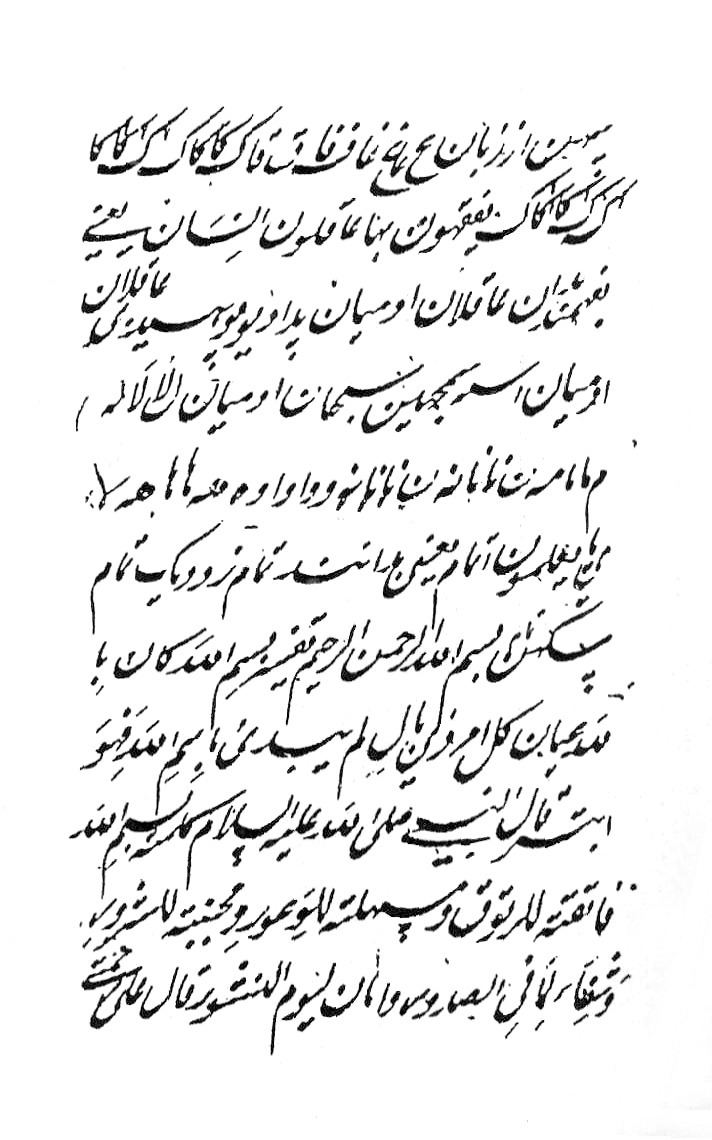 | ||
The Pashto alphabet (Pashto: پښتو الفبې pax̌to alifbe) is a modified form of the Persian alphabet known as Perso-Arabic, which is itself a derivative of the Arabic alphabet, with letters added to accommodate phonemes used in Pashto that are not found in Arabic and Persian.
Contents
History
The seventeenth century saw the rise of a polemic debate that was also polarized along lines of script. The heterodox Roshani movement wrote their literature mostly in the Persianate style called Nastaʿlīq script. The followers of the Akhund Darweza, and the Akhund himself, who viewed themselves as defending the religion against the influence of syncretism, wrote Pashto in the Arabicized Naskh, which is the generally used script in the modern era of Pashto with some individualized exceptions because of its greater adaptability for typesetting. Even lithographically reproduced Pashto has been calligraphied in Naskh as a general rule, since it was adopted as standard.[citation needed]
The Pashto alphabet has several letters which do not appear in any other Arabic script. For example, the letters representing the retroflex consonants /ʈ /, /ɖ /, / / and /ɳ / are written like the standard Arabic te, dāl, re and nun with a "panḍak", "ğaṛwanday" or also called "skəṇay" attached underneath, which looks like a small circle: ړ, ډ, ټ, and ڼ, respectively. The letters ښ and ږ (x̌īn/ṣ̌īn and ǵe/ẓ̌e) look like sīn (س) and re (ﺭ) respectively with a dot above and beneath. The letters representing t͡s and d͡z look like a ح with three dots above and an hamza (ء) above; څ and ځ, and are also specific to Pashto, although څ was also used in the related extinct language of Khwarezmian to represent both /t͡s/ and /d͡z/. Pashto has ی, ې, ۀ, and ۍ for additional vowels and diphthongs as well.
Pashto uses all 28 letters of the Arabic alphabet, and shares 3 letters (چ, پ, and ژ) with Persian and Urdu in the additional letters.
Letters
Pashto has 45 letters and 4 diacritic marks. The Southern (S), Central (C) and Northern (N) dialects of Pashto are included.
Notes
Historical letters now in disuse
The superscribed element of the letter ځ in earlier varieties was not hamza-shaped, but was very similar to little kāf of the letter ك. Such shape of the upper element of the letter is hard to find in modern fonts.
In the earliest known Pashto manuscript written in 1651 CE, ڊ (dāl with subscript dot) was used for /t͡s/ and /d͡z/, which was still used in the Diwan of Mirza written in 1690 CE, but this sign was soon replaced by څ which was first attested in 1696-7 CE. څ is now used for only /t͡s/.
Diacritic marks
The four diacritic marks are:
